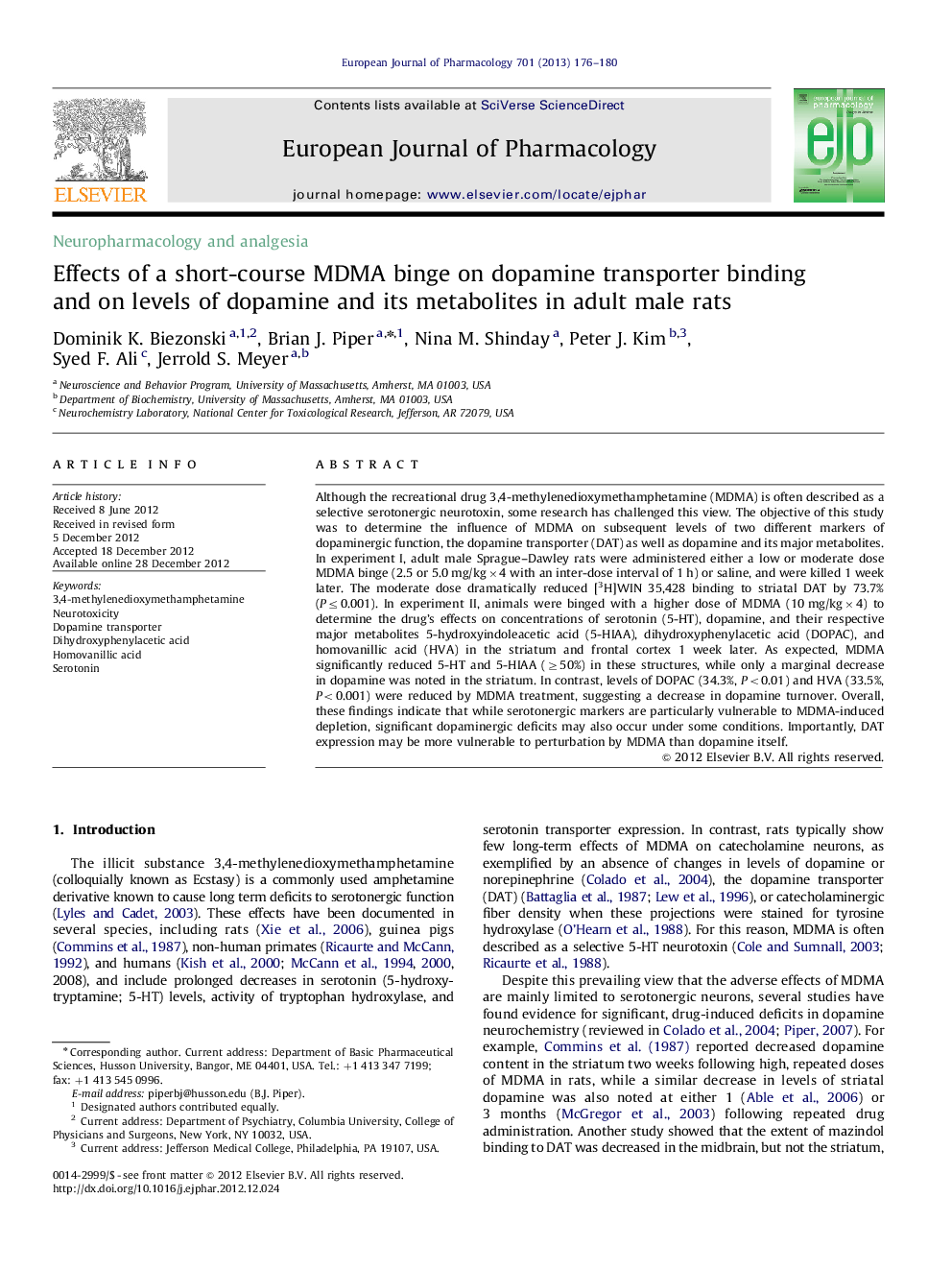| Article ID | Journal | Published Year | Pages | File Type |
|---|---|---|---|---|
| 5828795 | European Journal of Pharmacology | 2013 | 5 Pages |
Abstract
Although the recreational drug 3,4-methylenedioxymethamphetamine (MDMA) is often described as a selective serotonergic neurotoxin, some research has challenged this view. The objective of this study was to determine the influence of MDMA on subsequent levels of two different markers of dopaminergic function, the dopamine transporter (DAT) as well as dopamine and its major metabolites. In experiment I, adult male Sprague-Dawley rats were administered either a low or moderate dose MDMA binge (2.5 or 5.0 mg/kgÃ4 with an inter-dose interval of 1 h) or saline, and were killed 1 week later. The moderate dose dramatically reduced [3H]WIN 35,428 binding to striatal DAT by 73.7% (Pâ¤0.001). In experiment II, animals were binged with a higher dose of MDMA (10 mg/kgÃ4) to determine the drug's effects on concentrations of serotonin (5-HT), dopamine, and their respective major metabolites 5-hydroxyindoleacetic acid (5-HIAA), dihydroxyphenylacetic acid (DOPAC), and homovanillic acid (HVA) in the striatum and frontal cortex 1 week later. As expected, MDMA significantly reduced 5-HT and 5-HIAA (â¥50%) in these structures, while only a marginal decrease in dopamine was noted in the striatum. In contrast, levels of DOPAC (34.3%, P<0.01) and HVA (33.5%, P<0.001) were reduced by MDMA treatment, suggesting a decrease in dopamine turnover. Overall, these findings indicate that while serotonergic markers are particularly vulnerable to MDMA-induced depletion, significant dopaminergic deficits may also occur under some conditions. Importantly, DAT expression may be more vulnerable to perturbation by MDMA than dopamine itself.
Keywords
Related Topics
Life Sciences
Neuroscience
Cellular and Molecular Neuroscience
Authors
Dominik K. Biezonski, Brian J. Piper, Nina M. Shinday, Peter J. Kim, Syed F. Ali, Jerrold S. Meyer,
